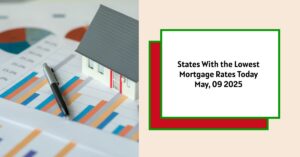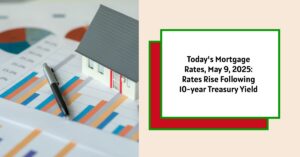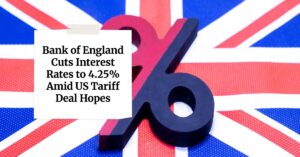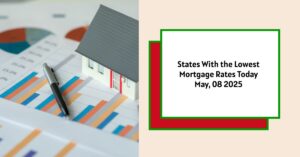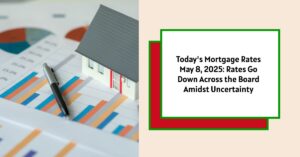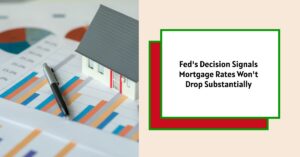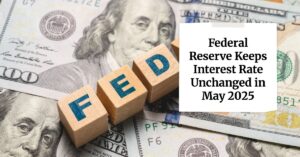For prospective homebuyers seeking the most favorable mortgage terms, geographic location plays a significant role. As of May 09, 2025, several states across the nation boast notably lower average interest rates for 30-year fixed-rate mortgages for new purchases. Leading the pack are New York, Pennsylvania, Florida, Georgia, Texas, North Carolina, New Hampshire, and Oregon, where average rates currently range from a competitive 6.73% to 6.92%.
This contrasts sharply with states experiencing the highest average rates, including Alaska, West Virginia, Maryland, South Dakota, Maine, Mississippi, North Dakota, and Wyoming, where averages are hovering between 7.00% and 7.08%. This disparity underscores the substantial impact a borrower's location can have on their mortgage interest rate.
States With the Lowest Mortgage Rates Today – May, 09 2025
Why the Regional Discrepancy in Mortgage Rates?
The variation in mortgage rates across states isn't arbitrary. Several key factors contribute to these geographic differences:
- Lender Competition and Presence: A higher number of active mortgage lenders within a state often fosters a more competitive environment, leading to potentially lower rates for borrowers. The mix of national and local lenders, with their varying risk tolerances, can also influence this.
- Average Credit Scores: States with a higher average credit score among their residents may be perceived as lower-risk markets by lenders, potentially resulting in slightly more attractive interest rates.
- Average Loan Amounts: The typical size of mortgages in a state can also impact rates. Regions with higher property values and consequently larger loan amounts might see lenders adjust rates based on the scale of investment and perceived risk.
- State-Specific Regulations: Each state has its own regulatory framework governing the mortgage industry. These regulations can affect lenders' operational costs, which can, in turn, influence the rates they offer to consumers.
- Risk Management Strategies: Lenders employ diverse risk management strategies. Some might adopt a more conservative approach in specific state markets, leading to slightly elevated rates to mitigate perceived local risks.
It's crucial to remember that these are aggregate averages. The specific interest rate an individual borrower will qualify for is primarily determined by their personal financial profile, including their credit score, income, down payment amount, and the lender they choose. Therefore, diligently comparing offers from multiple lenders remains paramount for every homebuyer. Advertised “teaser rates” often come with specific requirements and may not reflect the typical borrower's experience.
National Mortgage Rate Context
While state-level analysis provides valuable insights, understanding the broader national mortgage rate trends is equally important. As of May 09, 2025, the national average for a 30-year fixed-rate mortgage for new purchases stands at 6.95%, according to Zillow. This figure represents a modest increase from earlier in the week but remains below the mid-April 2025 peak of 7.14%. Earlier in the year, March 2025 saw a low of 6.50%, while September 2024 recorded a two-year low of 5.89%.
These fluctuations are driven by a complex interplay of national economic factors:
- Bond Market and Treasury Yields: Mortgage rates exhibit a strong correlation with the yields on 10-year Treasury bonds. Upward or downward movements in these yields often translate to similar changes in mortgage rates. The bond market reflects investor sentiment and economic forecasts, including inflation expectations.
- Federal Reserve's Monetary Policy: The Federal Reserve's actions, such as bond purchases (quantitative easing/tightening) and adjustments to the federal funds rate, indirectly influence mortgage rates by affecting the overall cost of borrowing in the economy. The significant rate hikes in 2022 and 2023 to combat inflation had a clear upward impact on mortgage rates, while the recent pause in rate cuts suggests a period of careful observation.
- Lender Competition: The degree of competition among mortgage lenders can influence the rates offered to borrowers. Increased competition may lead to slightly more favorable terms.
- Overall Economic Conditions: Macroeconomic factors such as inflation, unemployment levels, and the pace of economic growth can shape investor confidence and, consequently, bond yields and mortgage rates.
The intricate relationship between these factors makes precise predictions of future mortgage rate movements a significant challenge.
Read More:
States With the Lowest Mortgage Rates on May 8, 2025
Projected Mortgage Rates for the Week of May 5-11, 2025
When Will Mortgage Rates Go Down from Current Highs in 2025?
Looking Ahead
Predicting the future of mortgage rates requires careful consideration of the current economic climate and signals from the Federal Reserve. The Fed's cautious approach to interest rate cuts suggests that 30-year fixed rates may remain relatively stable in the short to medium term, likely fluctuating within the high-6% to low-7% range.
However, several potential scenarios could trigger shifts:
- A more rapid decline in inflation could prompt further Federal Reserve interest rate cuts, leading to lower mortgage rates.
- Signs of significant economic slowdown might incentivize the Fed to lower rates to stimulate growth, potentially benefiting homebuyers.
- Increased volatility in the bond market due to economic uncertainties or geopolitical events could cause fluctuations in Treasury yields and, consequently, mortgage rates.
- Changes in the Federal Reserve's balance sheet, particularly its holdings of mortgage-backed securities, could also influence rates.
- A significant weakening in mortgage demand could lead lenders to lower rates to encourage borrowing.
Given the current uncertainty, a sharp near-term decline in mortgage rates appears unlikely without substantial shifts in economic data or Federal Reserve policy. Gradual easing remains a possibility, but the timing and pace are yet to be determined.
Strategies for Today's Mortgage Market
For individuals looking to purchase a home or refinance in the current environment:
- Shop around extensively: Obtain and compare offers from multiple lenders to secure the most favorable terms. Even small interest rate differences can result in significant long-term savings.
- Understand your creditworthiness: Your credit score is a primary determinant of your interest rate. Take steps to improve your credit score if necessary.
- Explore various loan types: While the 30-year fixed-rate mortgage is common, consider other options like 15-year fixed-rate mortgages (typically with lower rates but higher monthly payments) or adjustable-rate mortgages (ARMs), carefully weighing their potential risks and benefits.
- Be prepared to act decisively: If you find a favorable rate, be ready to lock it in, as market conditions can change rapidly.
- Consider your long-term financial plan: Ensure your mortgage aligns with your overall financial goals and situation.
Understanding the state-level variations in mortgage rates, along with the broader national trends and influencing economic factors, empowers potential homebuyers and refinancers to navigate the market more effectively. Diligent research, patience, and a keen awareness of both local and national economic conditions are essential for making informed decisions on your home financing journey.
Work With Norada, Your Trusted Source for
Real Estate Investment in the U.S.
Investing in turnkey real estate can help you secure consistent returns with fluctuating mortgage rates.
Expand your portfolio confidently, even in a shifting interest rate environment.
Speak with our expert investment counselors (No Obligation):
(800) 611-3060
Also Read:
- Will Mortgage Rates Go Down in 2025: Morgan Stanley's Forecast
- Expect High Mortgage Rates Until 2026: Fannie Mae's 2-Year Forecast
- Mortgage Rate Predictions 2025 from 4 Leading Housing Experts
- Mortgage Rates Forecast for the Next 3 Years: 2025 to 2027
- 30-Year Mortgage Rate Forecast for the Next 5 Years
- 15-Year Mortgage Rate Forecast for the Next 5 Years
- Why Are Mortgage Rates Going Up in 2025: Will Rates Drop?
- Why Are Mortgage Rates So High and Predictions for 2025
- Will Mortgage Rates Ever Be 3% Again in the Future?
- Mortgage Rates Predictions for Next 2 Years
- Mortgage Rate Predictions for Next 5 Years
- Mortgage Rate Predictions: Why 2% and 3% Rates are Out of Reach
- How Lower Mortgage Rates Can Save You Thousands?
- How to Get a Low Mortgage Interest Rate?
- Will Mortgage Rates Ever Be 4% Again?
